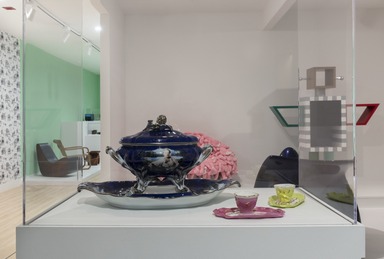

Design: 1880 to Now, Friday, October 23, 2020 through Ongoing (Image: DIG_E_2020_Design_1880_To_Now_DIG_01_PS11.jpg Photo: Jonathan Dorado photograph, 2020)

Design: 1880 to Now, Friday, October 23, 2020 through Ongoing (Image: DIG_E_2020_Design_1880_To_Now_DIG_02_PS11.jpg Photo: Jonathan Dorado photograph, 2020)

Design: 1880 to Now, Friday, October 23, 2020 through Ongoing (Image: DIG_E_2020_Design_1880_To_Now_DIG_03_PS11.jpg Photo: Jonathan Dorado photograph, 2020)

Design: 1880 to Now, Friday, October 23, 2020 through Ongoing (Image: DIG_E_2020_Design_1880_To_Now_DIG_04_PS11.jpg Photo: Jonathan Dorado photograph, 2020)
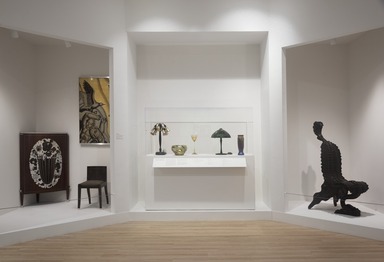
Design: 1880 to Now, Friday, October 23, 2020 through Ongoing (Image: DIG_E_2020_Design_1880_To_Now_DIG_05_PS11.jpg Photo: Jonathan Dorado photograph, 2020)
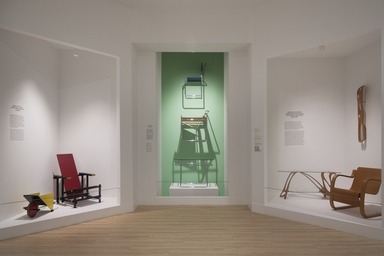
Design: 1880 to Now, Friday, October 23, 2020 through Ongoing (Image: DIG_E_2020_Design_1880_To_Now_DIG_06_PS11.jpg Photo: Jonathan Dorado photograph, 2020)

Design: 1880 to Now, Friday, October 23, 2020 through Ongoing (Image: DIG_E_2020_Design_1880_To_Now_DIG_07_PS11.jpg Photo: Jonathan Dorado photograph, 2020)

Design: 1880 to Now, Friday, October 23, 2020 through Ongoing (Image: DIG_E_2020_Design_1880_To_Now_DIG_08_PS11.jpg Photo: Jonathan Dorado photograph, 2020)

Design: 1880 to Now, Friday, October 23, 2020 through Ongoing (Image: DIG_E_2020_Design_1880_To_Now_DIG_09_PS11.jpg Photo: Jonathan Dorado photograph, 2020)

Design: 1880 to Now, Friday, October 23, 2020 through Ongoing (Image: DIG_E_2020_Design_1880_To_Now_DIG_10_PS11.jpg Photo: Jonathan Dorado photograph, 2020)
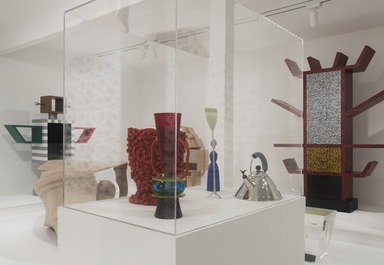
Design: 1880 to Now, Friday, October 23, 2020 through Ongoing (Image: DIG_E_2020_Design_1880_To_Now_DIG_11_PS11.jpg Photo: Jonathan Dorado photograph, 2020)

Design: 1880 to Now, Friday, October 23, 2020 through Ongoing (Image: DIG_E_2020_Design_1880_To_Now_DIG_12_PS11.jpg Photo: Jonathan Dorado photograph, 2020)

Design: 1880 to Now, Friday, October 23, 2020 through Ongoing (Image: DIG_E_2020_Design_1880_To_Now_DIG_13_PS11.jpg Photo: Jonathan Dorado photograph, 2020)

Design: 1880 to Now, Friday, October 23, 2020 through Ongoing (Image: DIG_E_2020_Design_1880_To_Now_DIG_14_PS11.jpg Photo: Jonathan Dorado photograph, 2020)

Design: 1880 to Now, Friday, October 23, 2020 through Ongoing (Image: DIG_E_2020_Design_1880_To_Now_DIG_15_PS11.jpg Photo: Jonathan Dorado photograph, 2020)

Design: 1880 to Now, Friday, October 23, 2020 through Ongoing (Image: DIG_E_2020_Design_1880_To_Now_DIG_16_PS11.jpg Photo: Jonathan Dorado photograph, 2020)

Design: 1880 to Now, Friday, October 23, 2020 through Ongoing (Image: DIG_E_2020_Design_1880_To_Now_DIG_17_PS11.jpg Photo: Jonathan Dorado photograph, 2020)

Design: 1880 to Now, Friday, October 23, 2020 through Ongoing (Image: DIG_E_2020_Design_1880_To_Now_DIG_18_PS11.jpg Photo: Jonathan Dorado photograph, 2020)
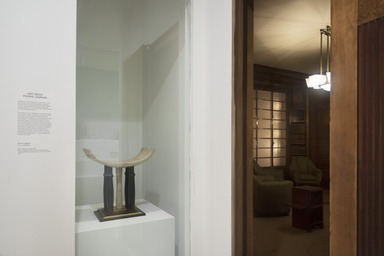
Design: 1880 to Now, Friday, October 23, 2020 through Ongoing (Image: DIG_E_2020_Design_1880_To_Now_DIG_19_PS11.jpg Photo: Jonathan Dorado photograph, 2020)

Design: 1880 to Now, Friday, October 23, 2020 through Ongoing (Image: DIG_E_2020_Design_1880_To_Now_DIG_20_PS11.jpg Photo: Jonathan Dorado photograph, 2020)

Design: 1880 to Now, Friday, October 23, 2020 through Ongoing (Image: DIG_E_2020_Design_1880_To_Now_DIG_21_PS11.jpg Photo: Jonathan Dorado photograph, 2020)

Design: 1880 to Now, Friday, October 23, 2020 through Ongoing (Image: DIG_E_2020_Design_1880_To_Now_DIG_22_PS11.jpg Photo: Jonathan Dorado photograph, 2020)

Design: 1880 to Now, Friday, October 23, 2020 through Ongoing (Image: DIG_E_2020_Design_1880_To_Now_DIG_23_PS11.jpg Photo: Jonathan Dorado photograph, 2020)

Design: 1880 to Now, Friday, October 23, 2020 through Ongoing (Image: DIG_E_2020_Design_1880_To_Now_DIG_24_PS11.jpg Photo: Jonathan Dorado photograph, 2020)

Design: 1880 to Now, Friday, October 23, 2020 through Ongoing (Image: DIG_E_2020_Design_1880_To_Now_DIG_25_PS11.jpg Photo: Jonathan Dorado photograph, 2020)

Design: 1880 to Now, Friday, October 23, 2020 through Ongoing (Image: DIG_E_2020_Design_1880_To_Now_DIG_26_PS11.jpg Photo: Jonathan Dorado photograph, 2020)
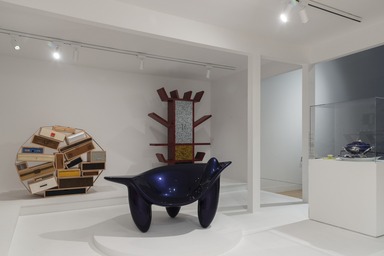
Design: 1880 to Now, Friday, October 23, 2020 through Ongoing (Image: DIG_E_2020_Design_1880_To_Now_DIG_27_PS11.jpg Photo: Jonathan Dorado photograph, 2020)
Design: 1880 to Now
-
Design: 1880 to Now
Design objects from the late nineteenth century to the present day form one of the core areas of the Brooklyn Museum’s rich and varied holdings. With this newly renovated gallery, the Museum looks beyond the traditional Eurocentric narratives of the past in favor of new insights that are more complex, nuanced, and inclusive. The works selected offer competing visions of modernity as they highlight pressing themes from the era like tensions between craft and industry, innovations in production, and cultural appropriation.
The two vases displayed nearby, made nearly 150 years apart, illustrate the changing perspectives on what it means to be American—Karl L. H. Mueller’s Century Vase from 1876 depicts the history of the United States as that of white settlement, while Roberto Lugo’s 2019 vase conveys a more contemporary and inclusive approach to the history of Brooklyn. The Asian decorative arts case displays objects made for European markets, illustrating global power and trade structures between Asian and non-Asian cultures. Other highlights exemplify a range of styles and design movements that were popularized from the late nineteenth century onward, including examples of the Arts and Crafts movement, French Art Deco, and various approaches to modernism. -
Gerrit Rietveld: Furniture in Primary Colors
Gerrit Rietveld was one of the leading members of De Stijl (“the style” in Dutch), the early twentieth-century circle of Dutch artists, architects, and designers who promoted their ideas through their journal of the same name. Founded in 1917 by the painter Theo van Doesburg, alongside Piet Mondrian, the architect J. J. P. Oud, and others, the group advocated for abstract, purist compositions of straight lines, primary colors, and “non-colors” (black and white) in an idealistic effort to achieve an objective, autonomous, and universal artistic language in the aftermath of World War I.
The son of a carpenter, Rietveld joined De Stijl in 1918. It was around this time that he designed the Red Blue Chair. The chair was originally constructed of unstained beechwood, but its interlocking elements were soon painted in De Stijl colors, thus manifesting the group’s principles in three dimensions. The chair in the Museum’s collection was formerly owned by Oud, for whose son Rietveld also designed a child’s wheelbarrow in 1923. A later version of the toy is also on view here, exemplifying how De Stijl could be applied to all areas of daily life. -
The Machine Age
In the 1920s and continuing into the 1930s, widespread exuberance about industrial progress influenced design in the United States, as the novelty of the skyscraper and advances in communication, transportation, and assembly-line production transformed the country’s landscapes and pace of living.
The arrival of the Machine Age, as many called it, coincided with Art Deco and the Jazz Age, as designers such as Norman Bel Geddes, Elsa Tennhardt, and Ilonka Karasz created cocktail sets and tableware inspired by the era’s modern ethos. At the same time, an infatuation with speed gave rise to streamlining, which brought aerodynamic styling to objects that did not functionally need it, whether a meat slicer, hair dryer, or tabletop radio -
After Modern
Toward the end of the twentieth century, the doctrines, ideologies, and narratives that drove much of furniture and object design throughout the century began to both diversify and break down. Beginning in the 1960s and 1970s, designers—especially in Italy, with its more expressive design traditions—rebelled against modernism’s restrictive tenets to create radical designs whose form and function were determined more by iconoclastic experimentation than utility.
By the 1980s, the Milan-based Memphis group, led by Ettore Sottsass, Jr., was unleashing colorful, untamed forms in iconic objects, as seen here in works by members Shiro Kuramata and Masanori Umeda. Later, in the 1990s, designers working in the Dutch group Droog Design created new meanings for design by deconstructing furniture typologies in works such as Tejo Remy’s chest of drawers made from repurposed drawers that the owner can bind together in endless permutations. The British designer Isabelle Moore’s Amoeba Rocking Chair of 1995, made using recycled plastic, gave playful form to environmental concerns.
More recently, the wallpaper installed here, by locally based Flavor Paper, re-appropriates the eighteenth-century European appropriation of Chinese motifs to create a Brooklyn Toile, while Jeroen Verhoeven’s Cinderella table merges the silhouettes of an antique French eighteenth-century chest and table through computer-aided design and fabrication. Indeed, while much of twentieth-century design was driven by a belief in linear progress, history has now become a force not to be overcome but to be quoted, revisited, and mined. -
Seeing American Through the Century Vase
Embellished with a selective, idealized narrative of American history, Karl L. H. Mueller’s Century Vase was made in Greenpoint, Brooklyn, for the Union Porcelain Works display at the 1876 Philadelphia Centennial International Exhibition. The vase features cameos of George Washington flanked by bison-head handles and painted and relief vignettes referring to the land, history, and destiny of America as experienced by its white settlers—log cabins, the Boston Tea Party, and William Penn’s treaty with Native Americans, as well as scenes of industrial progress, including a woman at a sewing machine—that represent the young nation’s past achievements.
Offering a counterpoint, Roberto Lugo’s Brooklyn Century Vase of 2019 revisits Mueller’s work by portraying a more complex America seen through the lens of Brooklyn. While mirroring Mueller’s composition, Lugo’s vase pays tribute to the borough and its African American legends, including baseball player Jackie Robinson and rapper Christopher Wallace (the Notorious B.I.G.), while replacing Mueller’s scenes of progress with imagery borrowed from food stamps. For Lugo, the piece “presents a nuanced understanding of place, one that allows for multiple points of view. . . . Brooklyn, like the United States, has a complicated history, one that should be told—and represented." -
French Art Deco: Moderne Luxury
In 1925, the French government hosted the Exposition internationale des arts décoratifs et industriels modernes (International Exposition of Modern Decorative and Industrial Arts) in Paris, a landmark event to celebrate the new style moderne that had emerged across the decorative arts and architecture.
The cabinet and side chair by Emile-Jacques Ruhlmann shown here were created for the Weitz family villa, outside Lyon, France, and exhibit the masterful veneers of rare woods and ivory for which Ruhlmann was known. Jean Dupas’s reverse-painted and gilt glass panel comes from one of several murals he created for the Grand Salon of the Normandie, then considered the most sumptuous ocean liner in the world. Alongside Edgar William Brandt, these and other designers helped define the luxurious French strain of style moderne, known today as Art Deco—a term that was derived from the name of the 1925 exposition, though it was not coined until the 1960s. -
Modernizing Plywood: Democratizing Design in the Mid-Twentieth Century
Though it was already being used in the nineteenth century, molded plywood—sheets of wood veneer laminated with glue and formed under heat and pressure—became ubiquitous in the mid-twentieth century as a relatively affordable means of producing, and democratizing, “good design.” Many of the leading designers of the period experimented with the material to create some of their most iconic works.
In the early 1930s, the Finnish designer Alvar Aalto created the Model 31 Chair, formed from a single sheet of molded plywood supported on cantilevered legs, evoking the earlier cantilevered seating in tubular steel of Marcel Breuer and others (see case nearby). Called by the U.S. Navy during World War II to create a lightweight, inexpensive leg splint for injured personnel, the California designers Charles and Ray Eames employed molded plywood to produce a functional yet sculptural form that informed their later furniture designs. In Italy, the architect and designer Carlo Mollino took inspiration from Surrealism, with its focus on the subconscious, for his tea table, creating an undulating base supporting a glass top whose shape was traced from a drawing of a woman’s torso by the Surrealist artist Leonor Fini. -
Art Deco: The Weil-Worgelt Study
This study, completed in 1930 in the Manhattan apartment owned by Milton and Ethel Weil at 525 Park Avenue, was designed in the Art Deco style popularized by the International Exposition of Modern Decorative and Industrial Arts held in Paris in 1925 (see French Art Deco: Moderne Luxury nearby). Although the United States did not have a pavilion at this international fair, American designers, museums, and patrons responded quickly to the new fashion.
The Weils commissioned the room from Alavoine, a decorating firm with offices in both Paris and New York. Alavoine made the paneling and presumably also the furniture in Paris, purchased the lighting fixtures from Lalique, the foremost French glassmaker at the time, and selected various decorative objects to complete the interior. The small built-in bar in the far-left corner was once hidden by a sliding door—a clandestine design reflecting the outlawing of alcohol in America during the Prohibition era of 1919 to 1933.
Ethel Weil’s second husband, Raymond Worgelt, donated the room to the Museum in 1970. It was the first twentieth-century period room installed in an American museum and the first addition to the Museum’s series of period rooms since the 1940s.
-
August 19, 2020
Design: 1880 to Now features furniture, ceramics, glass, and metalwork and looks beyond traditional Eurocentric narratives. Also on view are new contemporary acquisitions by Roberto Lugo, Masanori Umeda, and Shiro Kuramata.
The Brooklyn Museum draws from its rich holdings of decorative objects and unveils newly-renovated Decorative Arts galleries to present Design: 1880 to Now. This is the wing’s first renovation to take place since its galleries opened in 1971, and the installation similarly reimagines the collection and looks beyond traditional Eurocentric narratives with a display of works from the 19th century to the present day.
Design: 1880 to Now is organized by guest curator Aric Chen, independent curator and Curatorial Director of Design Miami, with Shea Spiller, Curatorial Assistant, Arts of the Americas and Europe. Additional curatorial contributions are provided by Catherine Futter, Senior Curator, and Elizabeth St. George, Assistant Curator, Decorative Arts, Brooklyn Museum. The renovation is led by Kenneth Kurtz, Museum Architect. The installation honors the late Dr. Barry R. Harwood, Curator of Decorative Arts at the Brooklyn Museum from 1988 to 2018.
“It was a privilege to work with the Museum—and before his passing, Barry Harwood—on this reinstallation, which aims to further draw out the many strengths of the collection, while expanding its narratives in ways the Museum will no doubt continue to build on,” says Chen. “It was important to respect how the collection was formed—there’s an element here of presenting a history of the history of design—while adding new perspectives and laying groundwork for exciting and more inclusive future directions.”
“We are very excited to unveil the redesign of our Decorative Arts galleries, which has been a three-year project in the making,” says Anne Pasternak. “To be able to honor Dr. Harwood in this way is very fitting and makes this moment doubly special. We have an incredible collection that I can’t wait to reintroduce to our visitors.”
Exhibition sections and highlights
The works on view offer competing visions of modernity as they highlight pressing themes from the era including tensions between craft and industry, innovations in production, and issues of cultural appropriation. Featured objects illuminate the complex trajectory of design history and look beyond traditional Eurocentric narratives of the past to include important issues of global exchange. Design: 1880 to Now pays particular attention to the influence of Chinese and Japanese culture on European and American decorative arts in the 19th and 20th centuries, European exploitation of labor, and problematic representations of East Asian and African cultures, which persist today.
Organized into sixteen sections, the works on view in Design: 1880 to Now exemplify a range of the styles and design movements that were popularized during this period. Focusing on new perspectives within these movements, the exhibition considers the Arts and Crafts movement from Britain to the United States; French Art Deco’s “Moderne Luxury”; the Machine Age, with a particular focus on female designers; and the influence of modern materials such as tubular steel in “From Bicycles to the Bauhaus” or molded plywood in “Democratizing Design in the Mid-twentieth Century.” While reimagining the collection, the exhibition also examines key figures in design from the mid-19th century onward, with a focus on international exchange through designers such as Gerrit Rietveld, Pierre Legrain, and Frederick Kiesler. The section “Louis Comfort Tiffany: Favrile Glass and Stained-Glass Lamps” pays particular attention to the labor history of these famous objects, which were designed and fabricated in a mostly female-operated studio. “After Modern” challenges the canon with an emphasis on designers who typified playful postmodern and contemporary expression such as Ettore Sottsass, Isabelle Moore, Tejo Remy, and Jeroen Verhoeven.
The installation also brings several newly-acquired contemporary works into cross-period conversations. In “Seeing America through the Century Vase,” Roberto Lugo’s 2019 Brooklyn Century Vase, which portrays a complex and diverse America seen through the lens of Brooklyn by paying tribute to the borough’s African American legend, is paired with the iconic 1876 Century Vase by Karl H. L. Mueller. Sections such as “Asia and the Decorative Arts” and “Cultural Appropriation and the Aesthetic Movement” challenge Asian representation across periods. “Japanese Modern” features two new acquisitions—Ginza Cabinet by Masanori Umeda, a robot cabinet that offers a playful example of postmodern furniture design, and is one of sixteen important gifts from the collection of George Kravis II to the Museum; and Shiro Kuramata’s Feather Stool, a poetic piece with dyed Mallard duck feathers seemingly floating in its transparent acrylic base—alongside works by Japanese modernists such as Sori Yanagi and Ubunji Kikodoro.
Renovation
The renovation opens up the gallery spaces, makes the artworks more visible, improves accessibility, and encourages better visitor flow in the 3,000 square foot space. A wall that limited visibility and entry from the Sackler Center has been removed, previously installed heavy wooden ramps have been lightened with transparent glass railings, floor-to-ceiling glass barriers were removed, and the openings to display spaces have been widened.
Visitors will now be able to step into the Weil-Worgelt Study (ca. 1928-1930), where the small bar (hidden in the corner in defiance of Prohibition) is visible for the first time since the room’s installation in 1971. Additionally, the gallery walls have been freshened up with new coats of paint and accents of electric green along the corridor. The entire exhibition space, formerly known as the 20th-century Corridor, has been brightened with new lighting.
The Collection
The Brooklyn Museum’s outstanding collection of more than 34,000 mostly American and European decorative art objects comprises a wide range of furniture, silver, glass, ceramics, and textiles from the 17th century onwards. The earliest pieces of decorative art to enter the collection were silver spoons that came to the Museum in 1902, followed the next year by a number of pieces of European porcelain. With the arrival of Luke Vincent Lockwood, a noted collector and scholar, in 1914, the focus of the collections shifted from Europe to America. During the 1930s, the Museum began actively collecting modern design, focusing on design's relationship to industry, and organizing numerous landmark exhibitions on the subject.
Design: 1880 to Now is organized by Aric Chen, Curatorial Director, Design Miami, with Shea Spiller, Curatorial Assistant, Arts of the Americas and Europe, Brooklyn Museum. Additional curatorial contributions provided by Catherine Futter, Senior Curator, and Elizabeth St. George, Assistant Curator, Decorative Arts, Brooklyn Museum.
Leadership support for this installation is provided by Dr. Susan Weber. Generous support is provided by Julian A. Treger. This installation honors the late Dr. Barry R. Harwood, Curator of Decorative Arts at the Brooklyn Museum from 1988 to 2018.
Design: 1880 to Now
View Original
